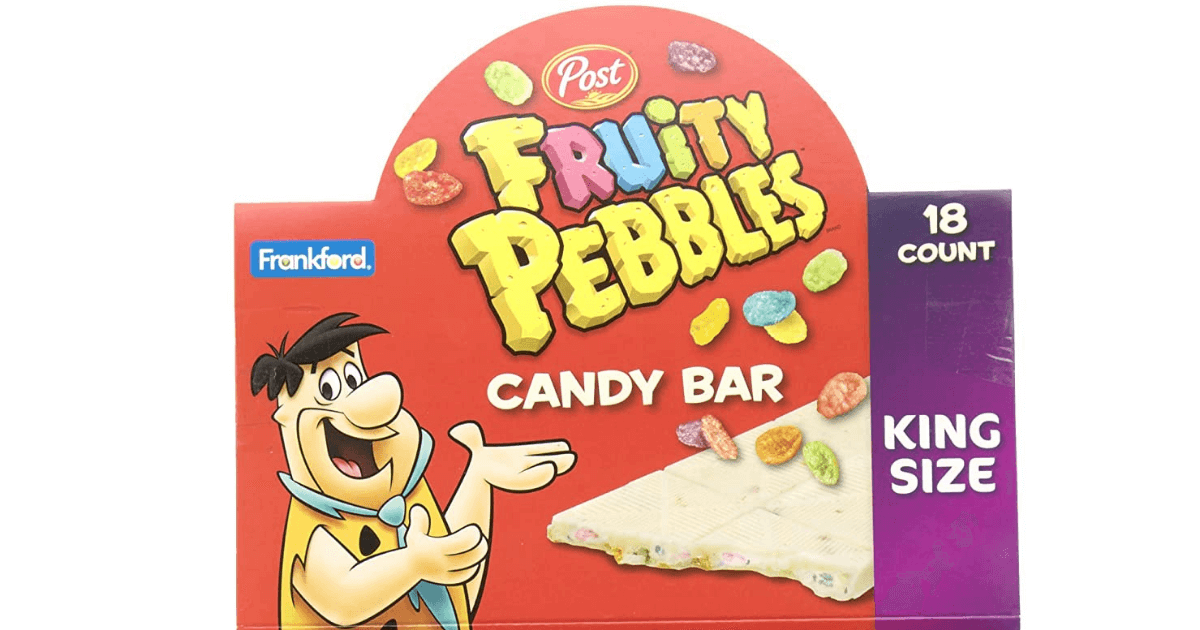Candy and Cereal Brands Sign Sweet Licensing Deals

The merger of licensed cereal brands with candy, once largely seasonal, is fast becoming an everyday item as comfort foods that gained favor with homebound consumers extend their reach.
The combination is no stranger to holidays. Galerie USA had Fruit Loops candy canes at Christmas. Frankford Candy is fielding Apple Jacks- and Rice Krispies-infused chocolate Easter Rabbits and is taking Post Holdings’ top-selling Fruity and Cocoa Pebbles cereal into candy bars and other products. Additionally, Mars Corp.’s M&M’s Easter candies were recently combined with General Mills’ Honey Grahams cereal brand.
But as staple breakfast brands become all-day snacks, the combination is moving outside the candy aisle.
For example, Galerie has relaunched Kellogg’s cereal straws—which were introduced in 2007 and discontinued two years later—as Fruit Loops- and Cocoa Krispies-branded products that will gain shelf space in the snack aisle when they launch at Kroger’s stores in September, said Mary Rafferty, director of licensing at Galerie. Galerie also markets Fruit Loop gummies in a seasonal gift package.
“The magic is that consumers already know what one flavor tastes like and then you mash it with another product,” Rafferty said. “Consumers already have that built-in expectation. It is always hard to get people to try new types of food. But if they already know what it’s going to taste like, it’s much easier to cross that hurdle. It’s kind of a perfect storm right now since cereal brands had a resurgence during the pandemic and it was a comfort food that the whole family enjoyed.”
In most cases, candy companies are buying the ingredients from the cereal maker and licensing the brand. Beause candy companies typically having a strong presence in most stores’ check-out areas and candy aisles, these partnerships gives cereal brands a new placement without having to produce additional products.
This trend comes as the sales surge that both candy and cereal saw during the pandemic is showing signs of easing. Candy sales rose 10.3% ($36.9 billion) in the year ended January 23 but are expected to slow to a 3.9% gain this year. Candy sales are expected to hit $44.9 billion by 2026. On the cereal side, meanwhile, there was a tight manufacturing capacity prior to the pandemic. As a result, Kellogg’s has been playing catch up ever since, CEO Steve Cahillane said in releasing earnings earlier this year. Kellogg’s cereal sales declined 14% last year due partly to a 12-week strike at its plants and sales are expected to increase 3% this year. For its part, Post Holdings’ North American sales declined 1.7% in 2021 to $1.9 billion amid “softness” across value and private businesses.
For the most part cereal and candy pairings are expected to remain largely a seasonal business this year, before growing more into an everyday item in 2023, said Christine McAuliffe, senior VP for international business at The Joester Loria Group, which represents Kellogg’s.
“For the most part, seasonal seems to be the place to start and then expand into every day,” McAuliffe. “It has to do with shelf space and with seasonal there is a little more room to test something before you potentially get space in the candy aisle or check out. It’s the confection companies that are really looking for areas of innovation and cereal brands have unique flavor profiles that mesh well with candy. Chocolate was a good place to start for inclusion (with cereal) and confections are just one of the areas for extending food brands.”




